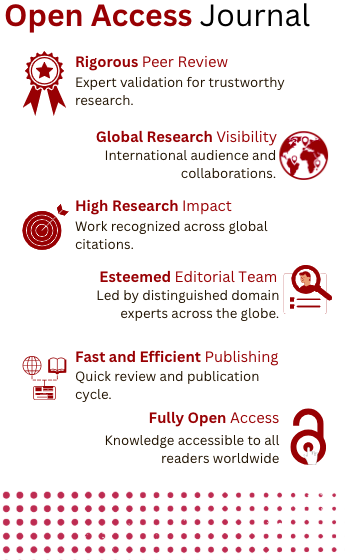A Connotation and Measurement of Dark Web in Factual Environment: Analysis and Observations
DOI:
https://doi.org/10.5281/zenodo.8026951Keywords:
TOR Browser, Anonymity, Child protection, Legitimate, Dark webAbstract
: The dark web refers to a part of the internet that is not accessible through traditional search engines or web browsers and can be accessed through special software, such as Tor. The Tor browsers allows users to browse the web anonymously. The dark web is often associated with illegal activities, such as buying and selling of drugs, weapons, and stolen data, as well as the exchange of sensitive or confidential information. It's important to note that not everything on the dark web is illegal, but it is a place where anonymity and privacy are highly valued. It's also important to be cautious when accessing the dark web, as there are many risks associated with it, including the potential for scams, hacking, and other criminal activities. However, it can also be used for legitimate purposes such as anonymous communication, privacy protection, and access to restricted information. However, it is important to note that not all activities on the Dark web are illegal, and some users access it for privacy reasons. The dark web contains a variety of information that may be dangerous to children, since children are curious about the dark web, it has attracted many children who might be at risk. Purpose of dark web is to hide the identity. The dark web can be dangerous if you aren’t careful about what you view. Even through the dark web may be used in illegal way but still the dark web can be utilized with positive notion.References
Biryukov, A., Pustogarov, I., & Weinmann, R. P. (2014). Content and popularity analysis of Tor hidden services. Proceedings of the 2014 ACM SIGSAC Conference on Computer and Communications Security.
Chen, H., Chung, W., Qin, J., Reid, E., Sageman, M., & Weimann, G. (2008). Uncovering the Dark Web: A case study of Jihad on the Web. Journal of the American Society for Information Science and Technology. https://doi.org/10.1002/asi.20838
Chakravarty, S., Ktait, A., & Dube, A. (2019). A comparative study of darknet markets. Journal of Money Laundering Control, 22(1), 68-81.
Gehl, R. W. (2016). Power/freedom on the dark web: A digital ethnography of the Dark Web Social Network. New Media and Society. https://doi.org/10.1177/1461444814554900
Harrison, J. R., Roberts, D. L., & Hernandez-Castro, J. (2016). Assessing the extent and nature of wildlife trade on the dark web. Conservation Biology. Https://doi.org/10.1111/cobi.12707
Hurlburt, G. (2017). Shining Light on the Dark Web. Computer. https://doi.org/10.1109/MC.2017.110 [5] Jonason, P. K., Lyons, M., Baughman, H. M., & Vernon, P. A. (2014). What a tangled web we weave: The dark triad traits and deception. Personality and Individual Differences. https://doi.org/10.1016/j.paid.2014.06.038
Kshetri, N. (2018). Blockchain's roles in meeting key supply chain management objectives. International Journal of Information Management, 39, 80-89.
McCoy, D., Pitsillidis, A., Vern Paxson, S., Weaver, N., & Kreibich, C. (2012). Measuring the utility of security signals with respect to internet routing events. Proceedings of the ACM SIGCOMM Internet Measurement Conference.
Martin, J., & Malik, M. (2019). Cryptocurrency-enabled crime: An analysis of cryptocurrency-related cybercrime and money laundering. Journal of Financial Crime, 26(2), 282-299.
Navara, K. J., & Nelson, R. J. (2007). The dark side of light at night: Physiological, epidemiological, and ecological consequences. In Journal of Pineal Research. https://doi.org/10.1111/j.1600- 079X.2007.00473.X
Ahmed, S. T., Kumar, V. V., Singh, K. K., Singh, A., Muthukumaran, V., & Gupta, D. (2022). 6G enabled federated learning for secure IoMT resource recommendation and propagation analysis. Computers and Electrical Engineering, 102, 108210.
Ahmed, S. T., & Basha, S. M. (2022). Information and Communication Theory-Source Coding Techniques-Part II. MileStone Research Publications.
Raja, D. K., Kumar, G. H., Basha, S. M., & Ahmed, S. T. (2022). Recommendations based on integrated matrix time decomposition and clustering optimization. International Journal of Performability Engineering, 18(4), 298.
Downloads
Published
How to Cite
Issue
Section
License
Copyright (c) 2023 C. Gowthami, T Suresh, J Sheik Mohamed, N Ch S N Iyengar

This work is licensed under a Creative Commons Attribution-NonCommercial-NoDerivatives 4.0 International License.







